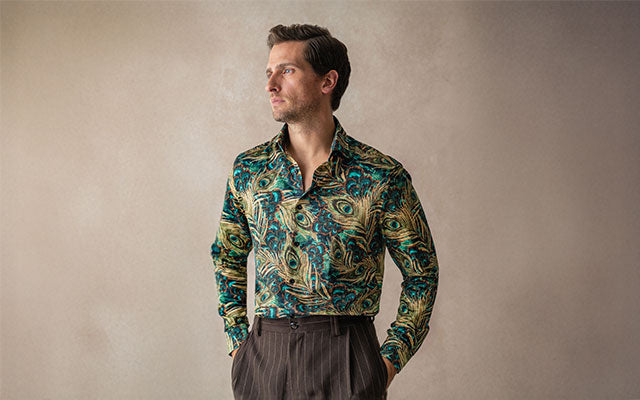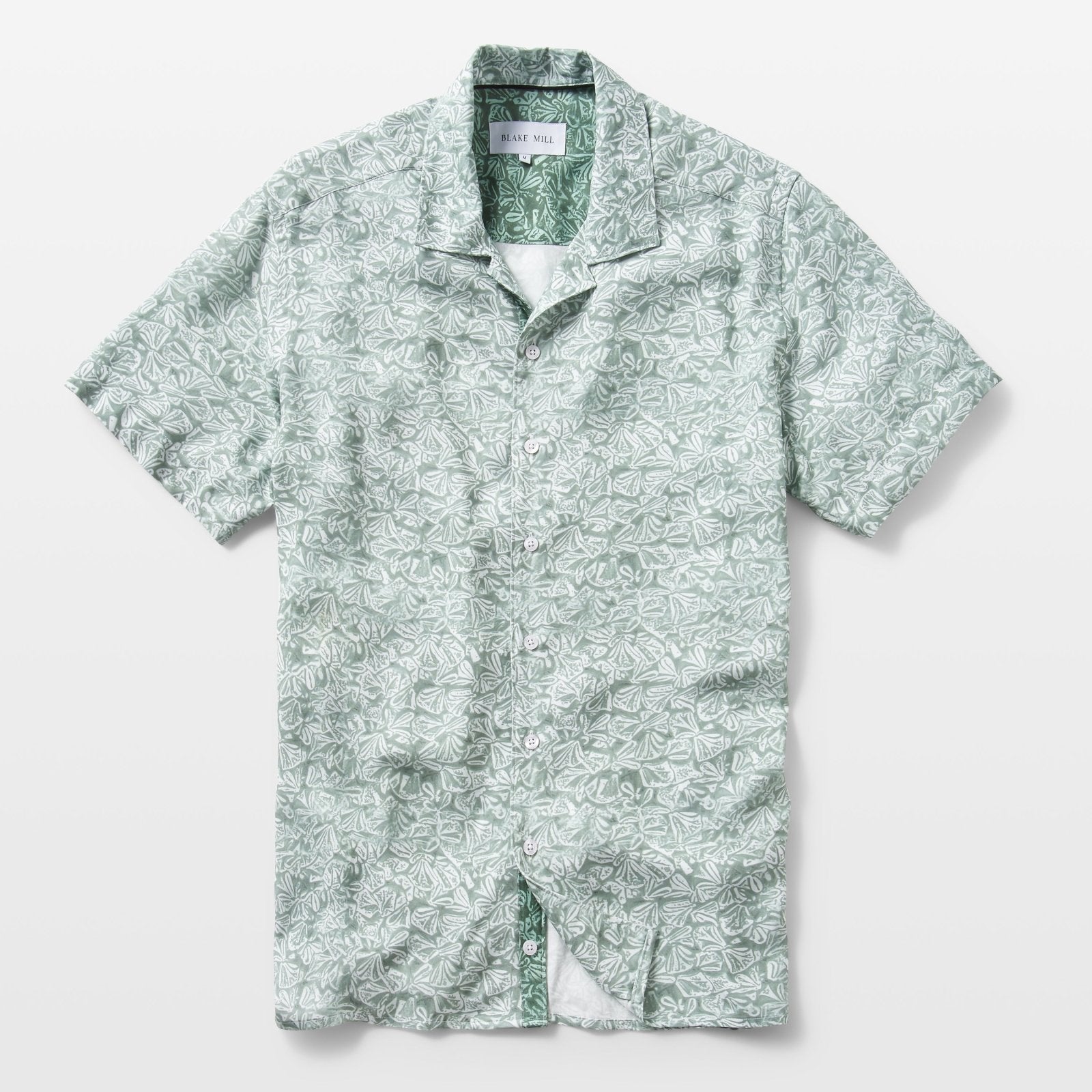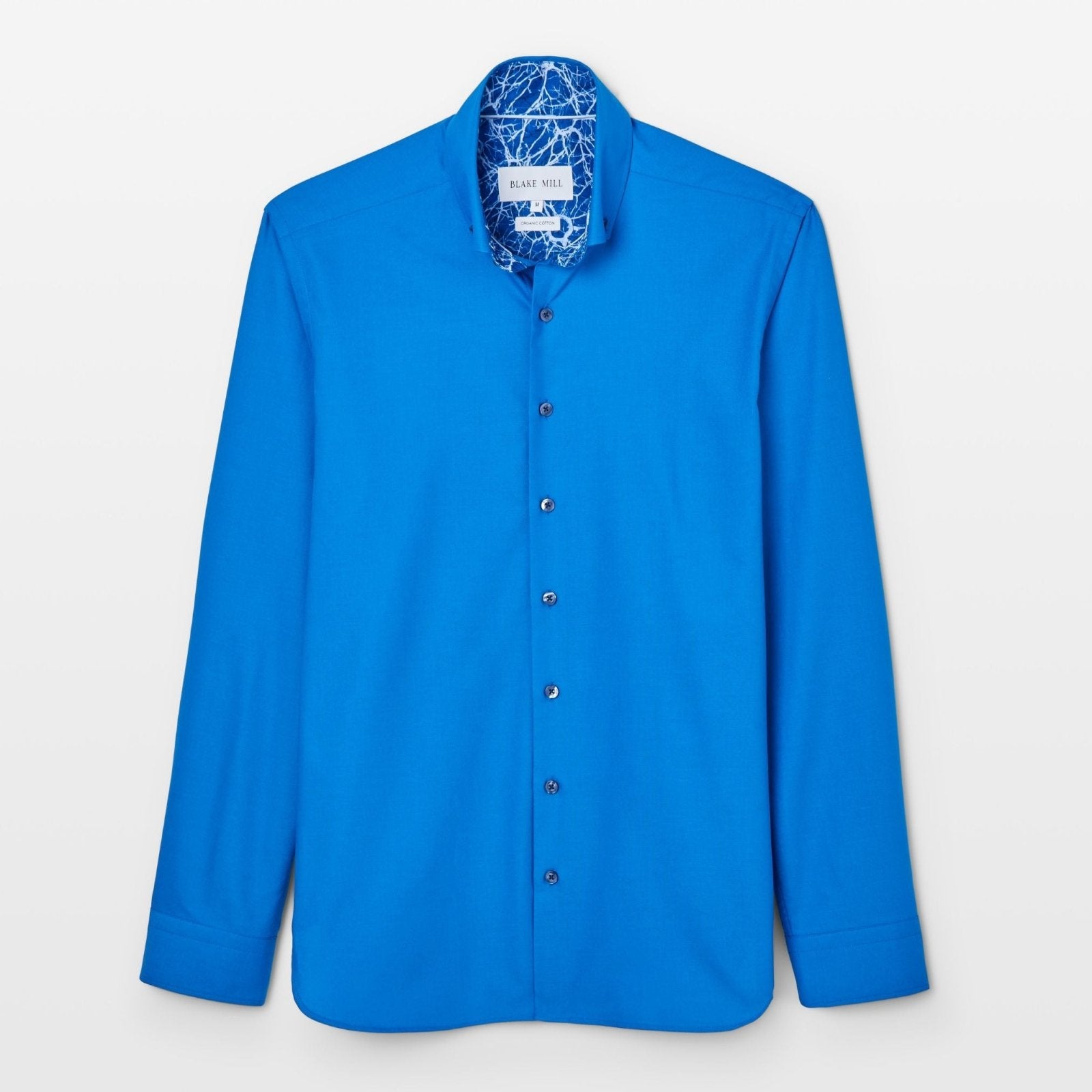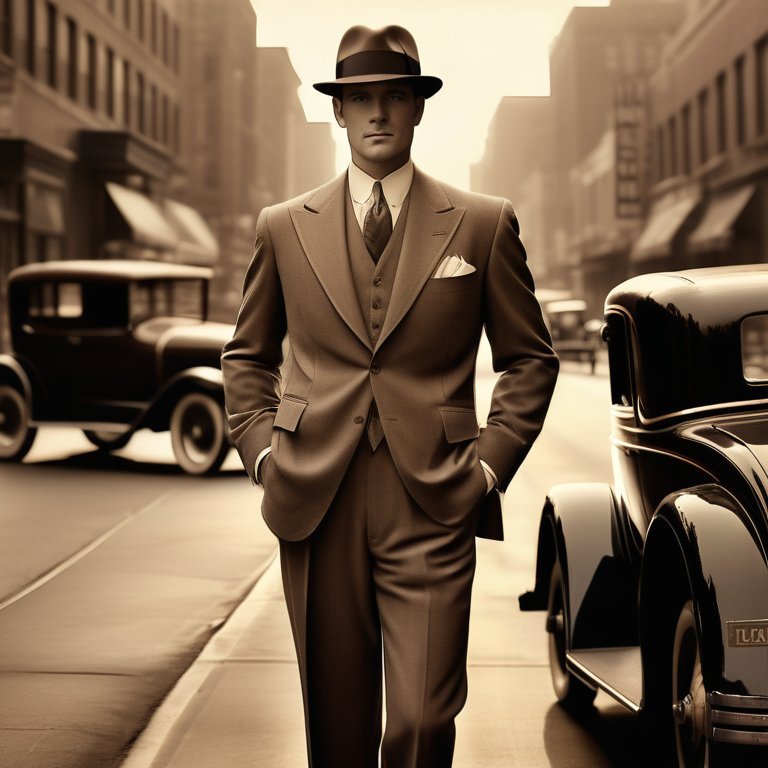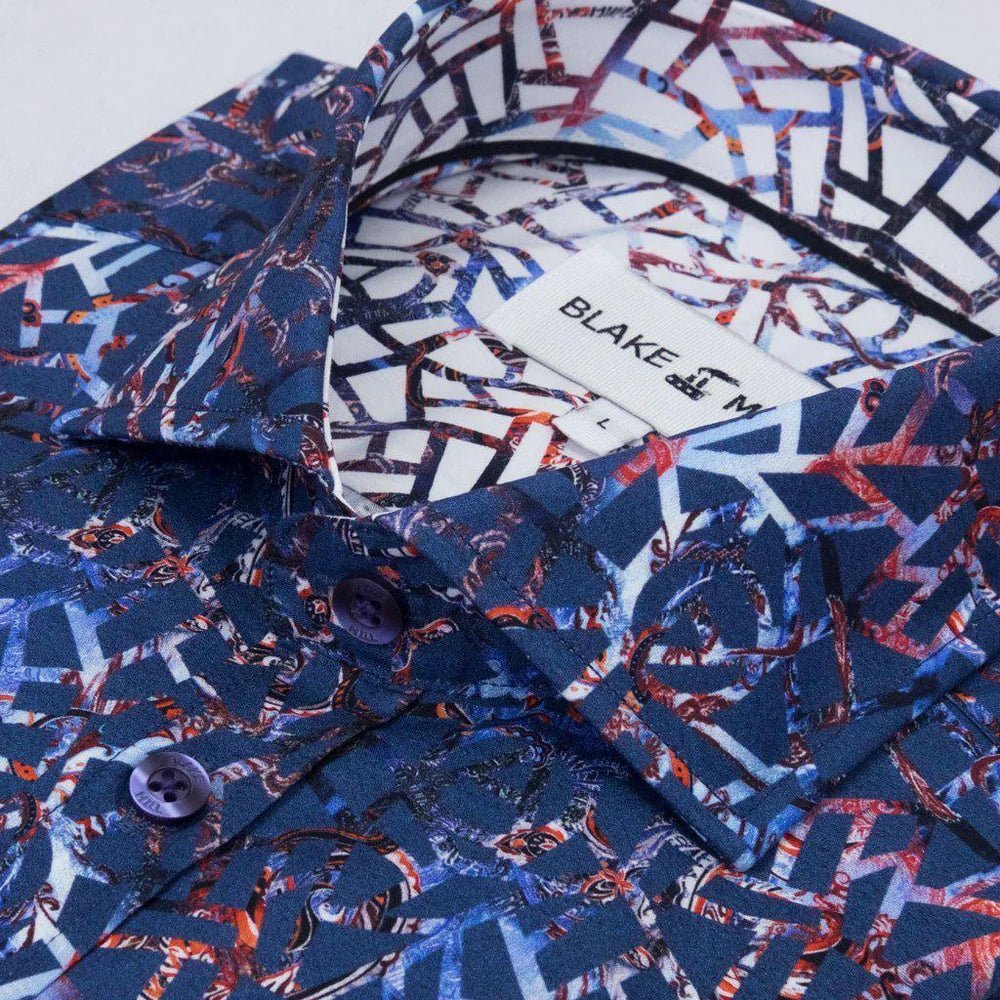From Utility to Style: Men's Fashion During and After WWII
The Impact of WWII on Men's Fashion
The Second World War had a profound impact on men's fashion, causing a significant shift in both the utility and style of clothing. As the war demanded practicality and efficiency, men's fashion adapted to wartime restrictions. The utility clothing scheme was introduced, which led to the creation of more casual shirts and short-sleeved options. Additionally, fabric rationing influenced men's attire, resulting in a limited colour palette and the use of grey tones in clothing.
Utility Clothing: A Response to War-Time Restrictions
During WWII, utility clothing became a necessary response to the war-time restrictions on fashion. Men's fashion saw a shift towards more casual shirts, with short-sleeved options becoming increasingly popular. These shirts were designed to be practical and functional, allowing men to move freely and comfortably. Utility clothing focused on simplicity, incorporating clean lines and minimal embellishments. The emphasis was on durability and versatility, with garments made to withstand the demands of war. Despite the utilitarian nature of these clothes, designers still found ways to incorporate style and personality into the designs. The result was a more relaxed and accessible approach to men's fashion, laying the foundation for the post-war revolution in style.
Fabric Rationing and Its Influence on Men's Attire
Fabric rationing was a key aspect of WWII that had a significant impact on men's attire. With limited resources, designers had to find creative ways to work with what was available. This led to the emergence of slim fit clothing, as less fabric was used to create a more streamlined silhouette. Linen shirts became popular during this time due to their lightweight and breathable nature. They were a practical choice for men in warm climates or during the summer months. Despite the restrictions, designers found innovative ways to utilise these fabrics, creating stylish and fashionable garments that allowed men to express their individuality within the limitations of the war.
The Post-War Fashion Revolution
The end of WWII marked a turning point in men's fashion, leading to a post-war revolution characterised by bold patterns and vibrant colours. After years of wartime austerity, men were ready to embrace a more expressive and optimistic style. The drab and muted tones of utility clothing were replaced with brighter shades and striking patterns. This shift in fashion reflected a desire for freedom and individuality, as well as a departure from the practicality of war-time attire. Men's fashion became a form of self-expression, allowing individuals to showcase their personality and creativity through their clothing choices.
The Demobilisation Suit: Transitioning Back to Civilian Life
As soldiers returned from the war, there was a need for clothing that could help them transition back into civilian life. The demobilisation suit emerged as a popular choice, offering a formal and sophisticated look - a utilitarian form of smart casual menswear. These suits were often paired with formal shirts, such as oxford shirts, to create a polished ensemble. The demobilisation suits featured tailored cuts and refined details, emphasising a return to normalcy and elegance. Men's fashion during this period embraced a more tailored and structured silhouette, reflecting a desire for a sense of order and formality after the chaos of war. The demobilisation suit became a symbol of class and sophistication, representing a return to civilian life and the pursuit of a brighter future.
Brighter Colours and Bolder Patterns: Breaking Free from Wartime Drab
With the post-war fashion revolution, men's fashion saw a dramatic shift towards brighter colours and bolder patterns. The subdued and utilitarian hues of wartime clothing were replaced with vibrant and eye-catching tones. Fabrics such as pique and flannel were utilised to create a more luxurious and expressive look. Bold patterns, such as florals, checks, and stripes, became popular choices for shirts and suits. Men embraced this newfound sense of freedom and self-expression, breaking free from the drabness of wartime attire. The introduction of brighter colours and bolder patterns allowed men to showcase their individuality and add a touch of personality to their wardrobes. This era marked a significant departure from the practicality of war-time clothing and ushered in a new era of style and creativity.
Influential Designers and Their Contributions
Influential designers played a vital role in shaping men's fashion during and after WWII. Savile Row, renowned for its bespoke tailoring, became a hub for masculine and sophisticated designs. Designers like Christian Dior and Hardy Amies revolutionised men's fashion, redefining masculinity and introducing new silhouettes. These designers brought a fresh perspective to men's fashion, blending traditional elegance with contemporary aesthetics. Their contributions continue to inspire and influence the industry to this day.
Christian Dior’s “New Look”: Redefining Masculinity
Christian Dior's "New Look" was a groundbreaking collection that redefined masculinity in men's fashion. The collection introduced a slimmer fit, emphasising a more tailored and structured silhouette. Dior's designs showcased a new level of sophistication and elegance, revolutionising men's wardrobes. The "New Look" challenged traditional notions of masculinity by embracing a softer and more refined aesthetic. This collection marked a turning point in men's fashion, inspiring men to embrace a more fashionable and polished look. Dior's influence can still be seen in modern fashion, with slim-fit clothing and tailored silhouettes remaining popular choices for men who want to make a statement with their wardrobe.
Hardy Amies and the Revival of Savile Row
Hardy Amies played a pivotal role in the revival of Savile Row and the introduction of modern and stylish formal shirts. Amies, known for his impeccable tailoring and attention to detail, brought a fresh perspective to men's fashion. His designs featured refined shapes and clean lines, paired with high-quality fabrics. Amies' formal shirts, often made from luxurious oxford cloth, became a staple in men's wardrobes. These shirts were designed to be versatile, suitable for both formal occasions and everyday wear. Amies' contributions to men's fashion helped revive the reputation of Savile Row as a hub for exquisite craftsmanship and masculine elegance. His legacy continues to inspire designers and fashion enthusiasts alike.
Cultural Shifts Reflected Through Fashion
Men's fashion during and after WWII was not only influenced by practical necessities and design innovations but also reflected the cultural shifts of the time. The rise of teenage culture and the idolization of male fashion icons in Hollywood played a significant role in shaping men's fashion trends. Young men sought to emulate their favourite movie stars, adopting their style and fashion choices. Hollywood became a powerful influence in men's fashion, with actors and celebrities driving trends and shaping popular culture. This era marked the beginning of a close relationship between fashion and entertainment, as men looked to the silver screen for style inspiration.
The Rise of Teenage Culture and Its Impact on Men’s Fashion
The post-war period saw the rise of teenage culture, which had a profound impact on men's fashion. Teenagers became a driving force in shaping trends and challenging traditional fashion norms. The rebellion against formal attire led to the popularity of more casual shirts, with short-sleeved options becoming a staple in men's wardrobes. This shift represented a departure from the formality of previous generations and embraced a more relaxed and youthful style. Men embraced casual shirts as a form of self-expression, showcasing their individuality and rejecting the rigid dress codes of the past. The rise of teenage culture marked a turning point in men's fashion, paving the way for a more diverse and inclusive approach to style.
Hollywood and the Idolisation of Male Fashion Icons
Hollywood played a significant role in shaping men's fashion during and after WWII. Male actors became fashion icons, setting trends and influencing popular culture. Their on-screen personas and stylish wardrobes inspired men to adopt their fashion choices. Long-sleeved men's shirts became synonymous with Hollywood glamour, representing elegance and sophistication. From crisp oxford shirts to luxurious silk options, men sought to emulate the style of their favourite actors. Hollywood's influence extended beyond the silver screen, with magazines and media amplifying fashion trends and creating a global fascination with celebrity style. The idolisation of male fashion icons in Hollywood helped popularise certain garments and styles, making them timeless classics in men's fashion.
Technological Advances and Their Effect on Fashion Manufacturing
Technological advances during and after WWII had a profound impact on fashion manufacturing. The introduction of synthetic fibres revolutionised the textile industry, providing new and innovative materials for clothing production. These synthetic fibres offered durability, affordability, and a wide range of design possibilities. Additionally, the concept of ready-to-wear emerged, enabling mass production and making fashionable clothing more accessible to the general public. The combination of synthetic fibres and ready-to-wear manufacturing techniques revolutionised the fashion industry, allowing for greater variety and affordability in men's fashion.
Mass Production Meets Couture: The Birth of Ready-to-Wear
The concept of ready-to-wear clothing emerged during and after WWII, revolutionising fashion manufacturing. Mass production techniques were introduced, allowing garments to be produced in larger quantities and at a lower cost. Ready-to-wear clothing offered men more affordable and accessible options, eliminating the need for custom tailoring. Short-sleeved shirts became a popular choice in ready-to-wear fashion, reflecting the more casual and relaxed style of the post-war era. Slim-fit shirts also gained popularity, offering a more tailored and modern silhouette. Ready-to-wear clothing not only democratised fashion but also allowed men to express their style without the need for bespoke garments. This marked a significant shift in men's fashion, opening up new possibilities and making fashion more accessible to a wider audience.
Synthetic Fibres: Revolutionising Fabric Choices
The introduction of synthetic fibres during and after WWII revolutionised fabric choices in men's fashion. These fibres offered a range of benefits, including durability, affordability, and a wide range of design possibilities. Linen shirts, once a popular choice, were now complemented by synthetic alternatives that provided similar qualities with added benefits. The use of synthetic fibres allowed for greater variety in colour options, providing men with a broader range of choices to express their personal style.
Text table:
|
Fabric Type |
Benefits |
|
Synthetic |
Durability, affordability |
|
Linen |
Breathability, lightweight |
|
Cotton |
Comfort, versatility |
|
Wool |
Insulation, warmth |
|
Silk |
Luxurious, elegant |
|
Polyester |
Wrinkle-resistant, easy-care |
|
Nylon |
Strength, water-resistance |
The availability of synthetic fibres expanded the possibilities for designers and consumers alike, allowing for more diverse and innovative fabric choices. Men's fashion embraced these advancements, with synthetic fibres becoming a staple in the industry.
The Global Influence on Men's Fashion Post-WWII
The post-WWII period saw a global influence on men's fashion, with different countries' styles and cultures leaving their mark. Italian tailoring became synonymous with sophistication and elegance, influencing men's fashion worldwide. American casual wear, on the other hand, represented a more relaxed and laid-back style that resonated with men around the globe. The fusion of these influences created a diverse and eclectic fashion landscape, offering men a variety of options to suit their individual tastes and preferences.
Italian Tailoring: The Embrace of La Dolce Vita
Italian tailoring emerged as a global fashion influence after WWII, representing the epitome of elegance and style. Italian designers embraced a more tailored and refined approach to men's fashion, creating sleek and sophisticated garments. Formal shirts, often made from high-quality fabrics like silk or cotton, were a hallmark of Italian tailoring. These shirts were designed to be slim fit, accentuating the wearer's physique and exuding confidence. Italian tailoring emphasised fine craftsmanship and attention to detail, with immaculate stitching and impeccable finishing. The influence of Italian tailoring can still be seen in modern men's fashion, with slim-fit formal shirts remaining a staple in stylish wardrobes. The embrace of Italian tailoring represented a departure from the more utilitarian style of the war period, offering men a touch of luxury and refinement.
American Casual: The Export of Denim Jeans Worldwide
American casual wear gained popularity worldwide after WWII, reflecting a more relaxed and laid-back style. Denim jeans became an iconic American export, symbolising a sense of freedom and individuality. Men embraced the rugged appeal of denim, pairing it with casual shirts for a relaxed and effortless look. The versatility of denim allowed it to transition seamlessly from workwear to everyday fashion. American casual wear represented a departure from the formality of previous eras, offering a more accessible and comfortable style. The influence of American casual wear can still be seen in contemporary men's fashion, with denim jeans and casual shirts remaining wardrobe staples. The export of American casual wear introduced a new approach to men's fashion, one that prioritised comfort and self-expression.
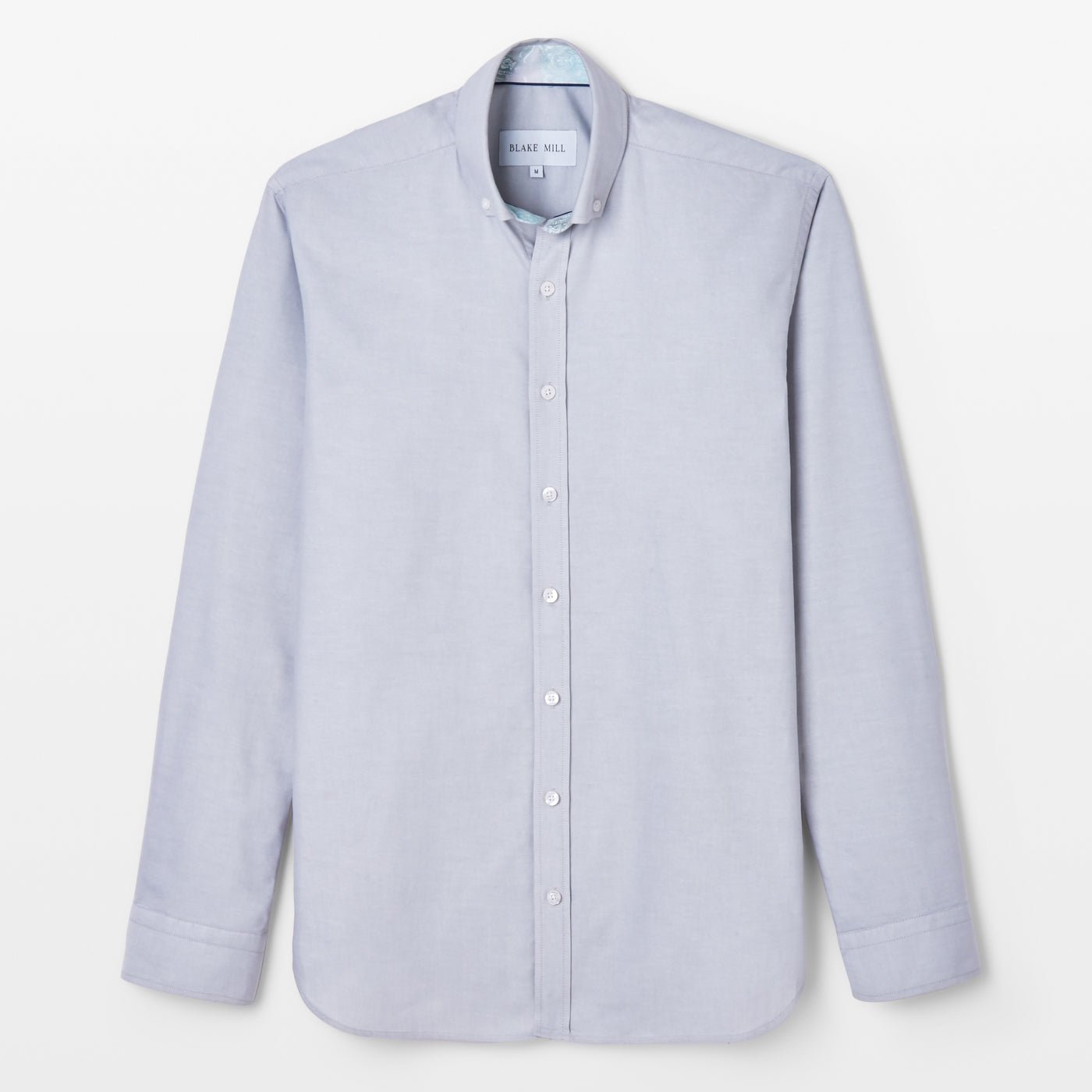
Frequently Asked Questions
How did military uniforms influence men's fashion during and after WWII?
Military uniforms played a significant role in shaping men's fashion during and after WWII. The trench coat and bomber jacket, both inspired by military attire, became popular fashion staples. The cuff detailing and the use of grey tones were influenced by the practicality and style of military uniforms.
What role did rationing play in the development of the utility clothing scheme?
Rationing played a crucial role in the development of the utility clothing scheme during WWII. With limited resources, designers had to create practical and functional clothing options. This led to the emergence of utility clothing, including casual shirts with short sleeves, that aimed to maximise the use of available materials and meet the needs of the wartime wardrobe.
How did men's fashion serve as a reflection of societal changes post-WWII?
Men's fashion post-WWII served as a reflection of societal changes, embracing bolder patterns and brighter colours. This shift represented a departure from the austerity of the war years and an embrace of individuality and self-expression. Men's fashion became a way to showcase their personality and reflect the changing cultural landscape, particularly with the rise of teenage culture.
In what ways did technological advancements change fashion manufacturing?
Technological advancements, including the introduction of synthetic fibres and the concept of ready-to-wear, revolutionised fashion manufacturing. Synthetic fibres offered new possibilities in terms of durability and design, while ready-to-wear manufacturing techniques allowed for mass production and accessibility. These advancements allowed for greater variety and affordability, including the production of linen shirts in synthetic alternatives.
Can you explain the significance of accessories in post-war men's fashion?
Accessories played a significant role in post-war men's fashion, adding the finishing touches to an ensemble. Formal shirts, such as oxford shirts, often featured cuff detailing that allowed for the addition of cufflinks or other accessories. These accessories added a touch of sophistication and personal style to men's outfits.
What was the impact of global influences on men's fashion after the war?
Global influences had a lasting impact on men's fashion after WWII. Italian tailoring brought a sense of sophistication and elegance, while American casual wear introduced a more relaxed and laid-back style. The export of denim jeans from America became a worldwide fashion phenomenon, symbolising a sense of freedom and individuality.
How did the concept of ready-to-wear revolutionise men’s fashion?
The concept of ready-to-wear revolutionised men's fashion by making fashionable clothing more accessible and affordable. Ready-to-wear options included a range of styles, including short-sleeved shirts in slim fit cuts. This shift eliminated the need for custom tailoring and allowed men to express their style without the need for bespoke garments. Ready-to-wear clothing democratised fashion and opened up new possibilities for men to explore their personal style.
To read about the evolution of men's style in the 20th century, check out The Swinging Sixties and Seventies: A Revolution in Men's Fashion

